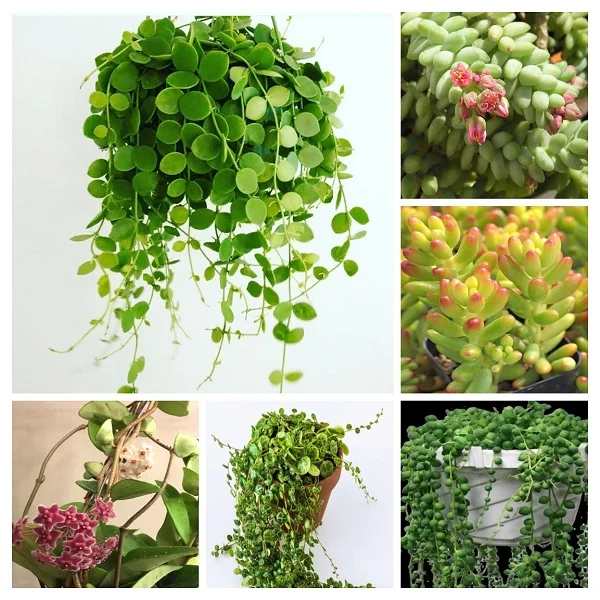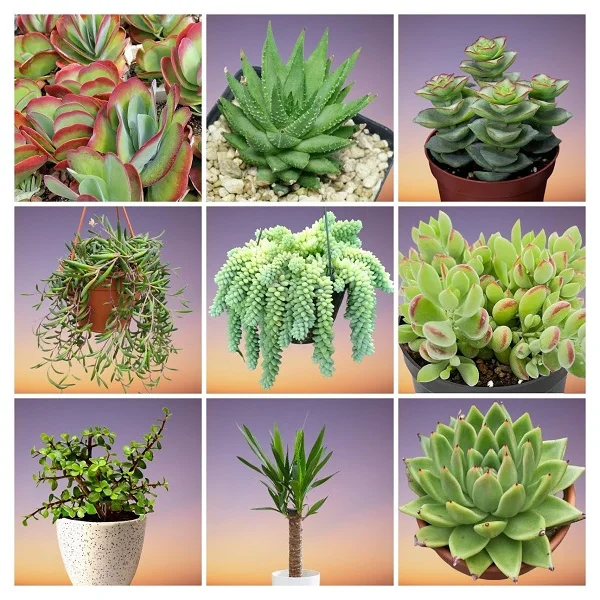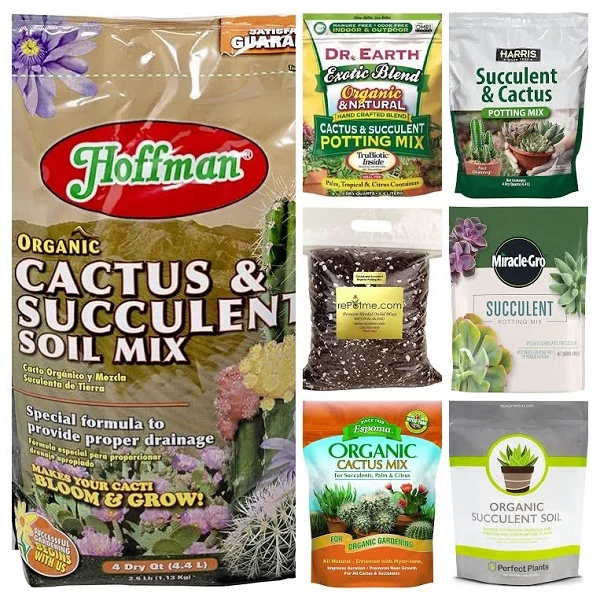20 Types of Succulent Plants with Names and Pictures
Some links in this post may be affiliate links
Succulent plants or succulents, are plants whose parts are thickened, fleshy, or engorged, which is an adaptation to arid climates where they grow naturally.
The succulents store a lot of water in these structures and this enables them to survive long periods of dryness in their natural environment.
The term 'succulent' comes from the Latin word 'sucus,, which means 'juice', or 'sap' in reference to the plant sap contained in the thickened or engorged structures.

These engorged structures are usually the leaves or the stems where the plant stores large amounts of water which is useful during the long dry periods.
Succulents are favorite indoor plants due to their striking, unusual appearance, as well as their ability to grow with minimal care.
Succulent Plants are generally easy to grow and are considered ideal even for beginners as they do not require very close attention.
While many Succulents exhibit an upright growth, some are trailing or climbing plants whose stems cascade beautifully down the sides of a pot or a hanging basket. They also look beautiful on a pedestal or high up on a shelf or a table top.
If you are looking to add Succulents to your collection, you may obtain these plants online from Amazon (Link to Amazon). Below is our list of the best Succulent Plants that you can select for your home.
20 Popular Succulent Types Ideal for Beginners
Popular succulent plant species are String of Pearls, Donkey's Tail Plant, Aloes, Hawaorthia, Echeveria, Flaming Katy, Snake Plant, Gasteria, Houseleeks, Moonstones, Snake Plants among others.
1. String of Pearls Plant (Senecio rowleyanus)
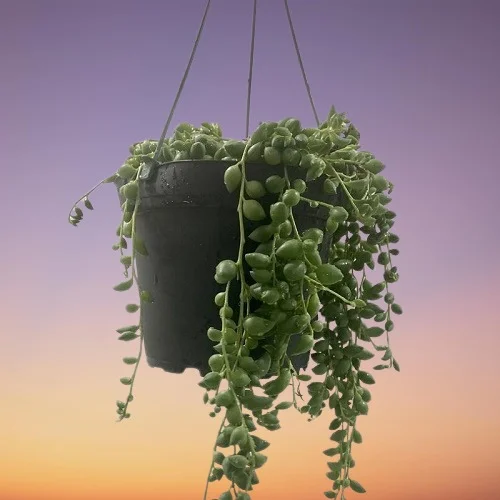
String of Pearls Plant also called String of Beads Plant is among the popular Senecio varieties with pendant, thread-like stems on which grows spherical, green leaves resembling a neck-lace of pearls giving it the common name.
The odd shaped leaves in String of Beads Plant like in its cousins Senecio serpens (Blue Chalksticks Plant) and Senecio barbertonicus (Barberton Groundsel) is an adaptation to arid conditions and allows for the storage of water while exposing minimum surface area to the dry air. This allows these plants to go for a considerably long period without being watered.
Senecio rowleyanus grows best in bright light with 6-8 hours of direct sunlight, warmth of 20-270C, humidity of 50-55% and moderately moist, rich, well-drained succulents potting mix coupled with monthly feeding in the growing season.
Learn more on how to grow and care for String of Pearls Plant
2. Donkey's Tail Plant (Sedum morganianum)
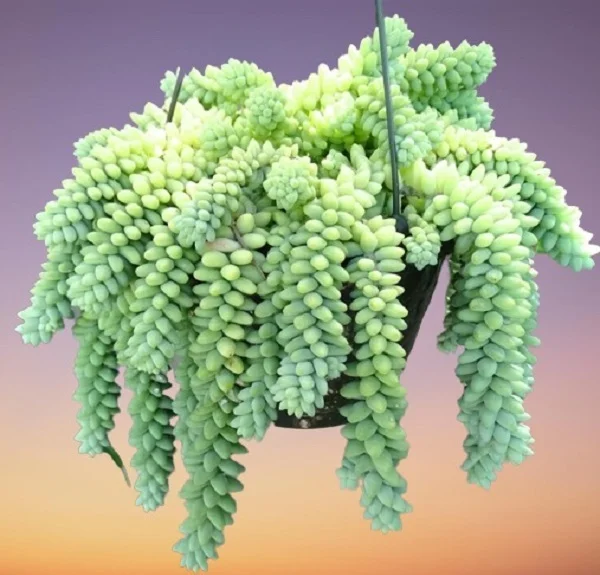
Donkey's Tail Plant also called Burro's Tail Plant is a trailing plant which bears 2-3 feet long stems, completely clothed with blue-green, cylindrical, succulent leaves making it one of the best plants for a hanging basket.
Burro's Tail Plant is a popular succulent plant belonging to the Sedum Genus together with Blue Jelly Beans Plant (Sedum pachyphyllum) and Jelly Beans Plant (Sedum rubrotinctum).
Sedum morganianum thrives in bright light with 6-8 hours of direct sunshine, warmth of 18-260C, humidity of 50-55% and moderately moist, fertile, loose succulents soil coupled with monthly feeding during the growing season.
Learn more on how to grow and care for Donkey's Tail Plant
3. Aloe Plants
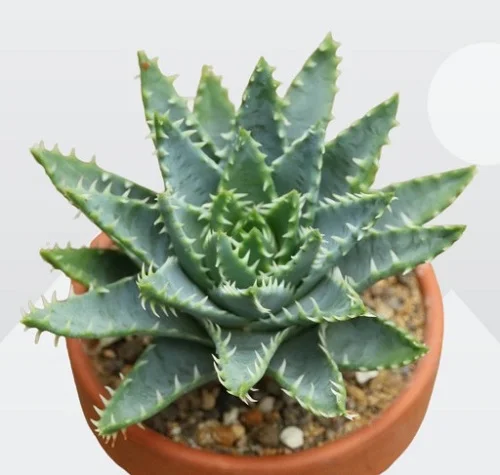
Aloe Plants are easy care succulent plants which come in all shapes and sizes. There are numerous species of Aloes but only a few are popular indoor plants.
The most popular species of Aloe succulents are Aloe barbadensis (Aloe vera or 'true aloe'), Aloe aristata (Lace Aloe), Aloe variegata (Partridge-breasted Aloe), Aloe jucunda, Aloe humilis (Hedgehog Aloe), Aloe mitriformis among others.
Aloe Plants flourish in bright light with 6-8 hours of direct sunlight, warmth of 16-280C, humidity of 50-55% and moderately moist, rich, well-drained succulents potting mix coupled with monthly feeding during the growing season.
Learn more on how to grow and care for Aloe Plants
4. Haworthia Plants

Haworthia Plants have firm, tough, fleshy leaves, usually dark-green in color while others are softer and contain leaf windows with translucent panels through which sunlight can reach internal photosynthetic tissues.
Popular Haworthia succulents include Haworthia fasciata (Zebra Plant) which is featured here, Haworthia cooperi (the transparent succulent with fleshy translucent leaves), Haworthia bolusii (Baker Haworthia), Haworthia cymbiformis (Cathedral Window) among others.
Haworthia do best in bright light with 6-8 hours of direct sunlight, warmth of 18-260C, humidity of 50-55% and slightly moist, rich, well-drained, succulent's soil coupled with monthly feeding during the growing season.
Learn more on how to grow and care for Haworthia Plants
5. Gasteria Plants
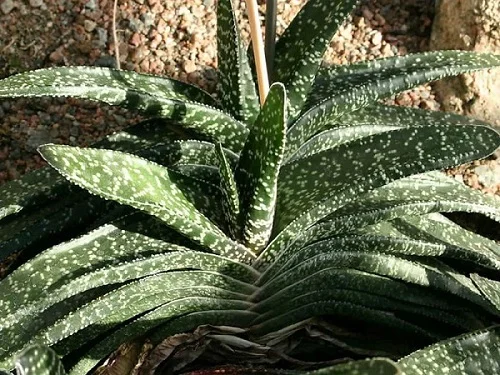
Gasteria Plants are recognizable from their thick, hard, succulent "tongue-shaped" leaves and hence their common names Ox-tongue, Cow-tongue and Lawyer's Tongue.
Some popular Gasteria varieties include Gasteria disticha, Gasteria baylissiana, Gasteria rawlinsonii, Gasteria brachyphylla and Gasteria pillansii among others.
Gasteria Plants thrive in bright light with 6-8 hours of direct sunlight, warmth of 18-290C, moderate humidity of 50-55% and moderately moist, fertile, well-drained succulents potting soil coupled with monthly feeding during the growing season.
Learn more on how to grow and care for Gasteria Plants
6. Echeveria Plants
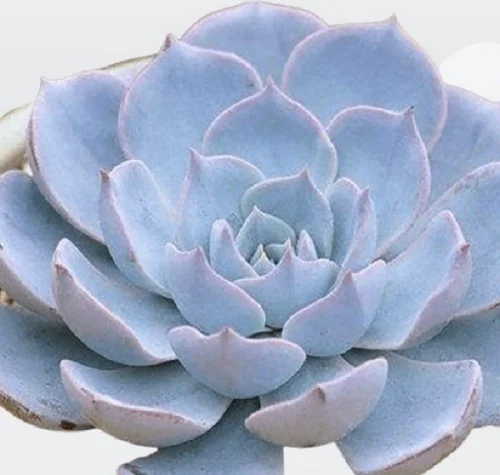
Echeveria Plants form a rosette of short, beautiful and tightly packed leaves on short stems. The leaves are covered with a white bloom, short hairs or a waxy coating. The flowers on short stalks (cymes) arise from the compact rosettes of fleshy leaves.
Some of the popular Echeveria succulents include Echeveria desmetiana (Peacock Echeveria) featured here, Echeveria derenbergii (Painted Lady Echeveria), Echeveria harmsii (Plush Plant), Echeveria carnicolor and Echeveria amoena among others.
Echeveria Plants grow best in bright light with 4-6 hours of direct sunlight, warmth of 16-280C, humidity of 50-55% and moderately moist, succulents potting soil coupled with fortnightly feeding during the growing season.
Learn more on how to grow and care for Echeveria Plants
7. Bear's Paw Succulent (Cotyledon tomentosa)

Bear's Paw Succulent also called Bear Claw Succulent or Cat Paw Succulent is a succulent evergreen shrub which bears large chunky ovate fuzzy light-green leaves.
Bear Claw Succulent belongs to the genus Cotyledon which comprises of other succulents like Cotyledon campanulata (Bell-flowered Cotyledon), Cotyledon pendens (Cliff Cotyledon), Cotyledon orbiculata (Pig's Ear Plant), Cotyledon undulata (Silver Crown Plant), Cotyledon velutina (Velvet Cotyledon) among others.
Cotyledon tomentosa thrives in bright light with 4-6 hours of direct sunlight, warmth of 15-260C, humidity of 50-55% and loose, fast-draining succulents soil that is low in organic matter coupled with monthly feeding during the growing season.
Read more on how to grow and care for Bear's Paw Succulent
8. Jade Plant (Crassula ovata)
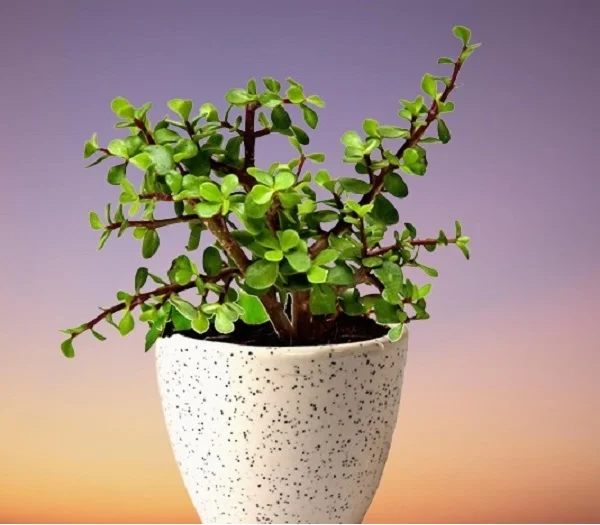
Jade Plant is among the popular Crassula varieties on account of its ease of care and ability to withstand a great deal of neglect and mismanagement making it ideal for a beginner.
Jade Plant and its cousins Crassula multicava (Fairy Crassula), Crassula arborescens (Silver Dollar Jade), Crassula elegans (Elegant Crassula) and Crassula falcata (Propeller Plant) are popular succulent plants that can survive a considerable period of time without being watered due to their fleshy leaves and stems which store water.
Crassula ovata grows best in bright light with 4-6 hours of direct sunlight, warmth of 15-260C, humidity of 50-55% and moderately moist, rich, well-drained succulents soil coupled with monthly feeding during the growing season.
Learn more on how to grow and care for Jade Plant
9. Teddy Bear Ears Vine (Cyanotis kewensis)
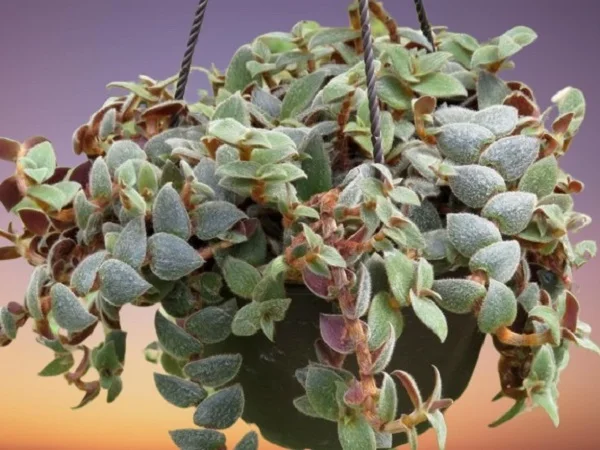
Teddy Bear Vine is a succulent vine which bears oval-shaped, hairy (velvet-like) leaves with purple undersides and is ideal for a hanging basket or a groundcover.
Teddy Bear Vine is closely related to Cyanotis somaliensis (Pussy Ears Vine) which has larger leaves with pale grey hairs while the Teddy Bear Vine bears rusty brown hairs.
Cyanotis kewensis thrives in bright indirect light with 4-6 hours of morning sunshine, warmth of 15-270C, humidity of 50-55% and moderately moist, rich succulents soils and monthly feeding during the growing season.
Learn more on how to grow and care for Teddy Bear Vine
10. String of Hearts Plant (Ceropegia woodii)
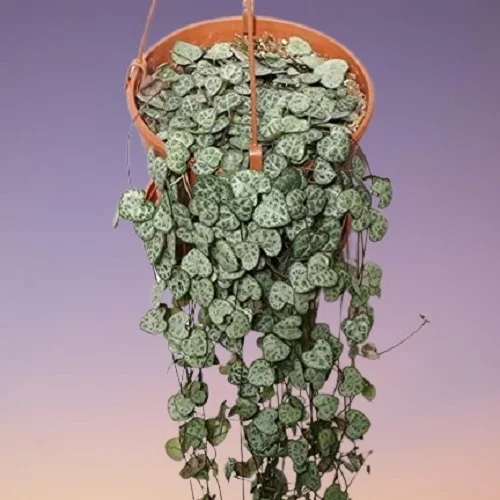
String of Hearts Plant also called Rosary Vine, Chinese Lantern or Chain of Hearts is an popular succulent on account of its fleshy, heart-shaped, grey-green leaves with an eye-catching marbled pattern.
Chain of Hearts Plant is one of the popular string of plants which bears long trailing stems which are spectacular in a hanging basket, on a tabletop or on a pedestal.
Ceropegia woodii requires bright indirect light (filtered light), warmth of 16-250C, humidity of 50-55% and moderately moist, rich, well-drained succulents potting soil coupled with monthly feeding during the growing season.
Read more on how to grow and care for String of Hearts Plant
11. String of Nickels Plant (Dischidia nummularia)

String of Nickels Plant also called Button Orchid is a trailing succulent plant which forms a dense mass of greenish-yellow foliage. The stems cascade downwards beautifully in a hanging basket or on a pedestal.
Other popular plants that are closely related to Button Orchid are Million Hearts Plant (Dischidia ruscifolia) and Watermelon Dischidia (Dischidia ovata).
Dischidia nummularia thrives in bright light with 4-6 hours of morning sunshine, warmth of 18-260C, humidity of 50-55% and moderately moist, rich, well-drained succulents soil with two feedings during the growing season.
Learn more on how to grow and care for String of Nickels Plant
12. String of Rubies Plant (Othonna capensis)
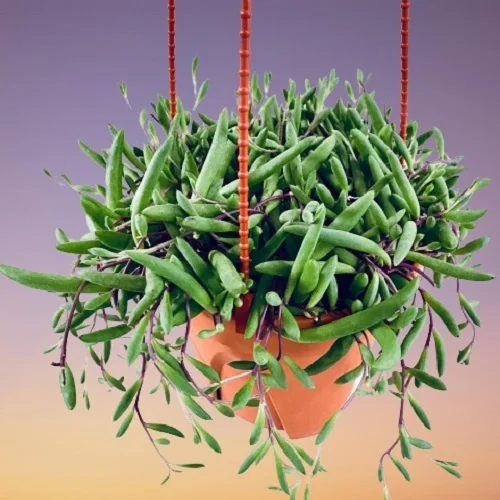
String of Rubies Plant also called String of Pickles, Little Pickles or Ruby Necklace is characterized by thin oval-shaped leaves and reddish-purple stem.
The bean-shaped leaves turn a bright ruby red when the plant is grown under bright sunshine. The trailing stems are spectacular when they cascade downwards beautifully in a hanging basket or on a pedestal. It is among the best hanging succulent plants for the home.
Othonna capensis thrives in very bright light with at least 6 hours of sunlight, warmth of 20-270C, humidity of 50-55% and moderately moist, fertile, well-drained succulents soil coupled with two feedings during the growing season.
Read more on how to grow and care for String of Rubies Plant
13. Red Log Plant (Peperomia verticillata)
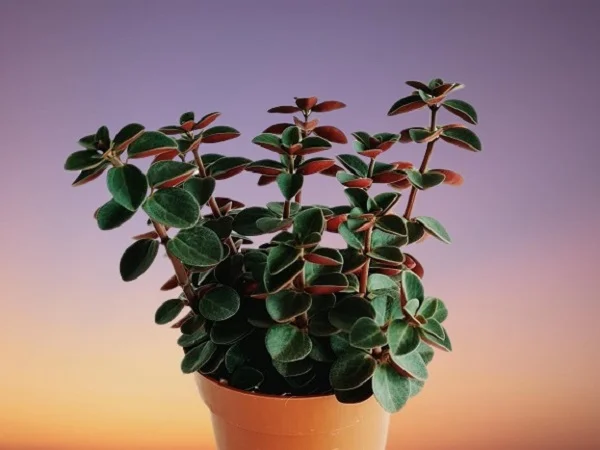
Red Log Plant also called Whorled Peperomia, Red Log Peperomia or Belly Button is among the popular Peperomia varieties and bears fleshy, cupped, dark-green leaves with red wine-colored undersides.
Whorled Peperomia and its relatives Coin-leaf Peperomia (Peperomia polybotrya), String of Turtles Plant (Peperomia prostrata), Ruby Glow Peperomia (Peperomia graveolens), Pearly Peperomia (Peperomia columella) and Trailing Jade Plant (Peperomia rotundifolia) are some of the popular succulent plants that are ideal for indoors.
Peperomia verticillata grows best in bright indirect light (filtered light), warmth of 15-260C, humidity of 50-55% and moderately moist, fertile succulents potting mix coupled with monthly feeding in the growing season.
14. Wax Plant (Hoya carnosa)
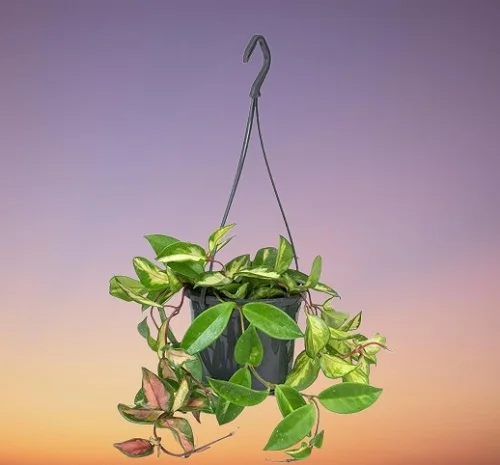
Wax Plant also called Porcelainflower is among the popular flowering plants with fleshy leaves and clusters of waxy, fragrant, star-shaped flowers.
The leaves in Hoya carnosa as in majority of Hoya plants varieties are simple entire, arranged in an opposite pattern and are typically succulent.
Hoya carnosa thrives in bright light with 4-6 hours of direct sunlight, warmth of 16-260C, humidity of 50-55% and moderately moist, rich, well-drained hoya potting soil coupled with monthly feeding during the growing season.
Read more on how to grow and care for Wax Plant
15. Flaming Katy (Kalanchoe blossfeldiana)

Flaming Katy also called Christmas Kalanchoe is one of the popular Kalanchoe varieties on account of its long lasting flowers which can be induced in any season and its reddish leaves when grown under bright light.
Unlike Christmas Kalanchoe which is grown for its magnificent blooms, many other Kalanchoes like Kalanchoe thyrsiflora (Paddle Plant), Kalanchoe marmorata (Pen Wiper Plant), Kalanchoe beharensis (Elephant's Ear Kalanchoe), Kalanchoe tomentosa (Panda Plant) and Kalanchoe daigremontiana (Devil's Backbone Kalanchoe) are grown for their decorative foliage.
Kalanchoe blossfeldiana thrives in bright light with 4-6 hours of direct sunlight, warmth of 15-280C, humidity of 50-55% and moderately moist, fertile, well-drained succulents soil coupled with fortnightly feeding during the growing season.
Read more on how to grow and care for Flaming Katy
16. Snake Plants (Dracaena trifasciata)

Snake Plant also called Mother-in-law's Tongue or Saint George's Sword Plant is a slow growing, succulent, low maintenance and extremely hardy plant which is also a good air cleaner.
The leaves in Snake Plant, one of the popular Dracaena Varieties are stiff and succulent. These sword shaped leaves give an architectural look which makes it ideal as a room divider.
Dracaena trifasciata flourish in bright light with 6-8 hours of direct sunlight, warmth of 16-290C, humidity of 50-55% and moderately moist, loose, fertile succulents potting soil coupled with monthly feeding in the growing season.
Learn more how to grow and care for Snake Plants
17. Houseleeks (Sempervivums)

Houseleeks also called Liveforever or Hens and Chicks are popular succulents which form mats composed of tufted leaves in rosettes and may take several years to flower but after flowering, they die, leaving many offsets that they have produced in their life and hence the common name, 'Liveforever'.
Sempervivums are closely related to Aeoniums (Tree Houseleeks) which bear succulent, glossy, spoon-shaped leaves typically arranged on a basal stem in a dense spreading rosette.
Sempervivums thrive in bright light with 4-6 hours of direct sunshine, warmth of 16-280C, humidity of 50-55% and moderately moist, fertile, well-drained succulents soil coupled with fortnightly feeding during the growing season.
Learn more on how to grow and care for Houseleeks
18. Moonstones Succulent (Pachyphytum oviferum)

Moonstones Succulent also called Sugar Almond Plant bears succulent, pale blue-green to bluish-purple, egg-shaped leaves which look-like a sugared almond confection.
The egg-shaped leaves in Sugar Almond Plants is an adapation of these plants to their natural habitat, the rocky cliffs of Mexico which enable them survive without much water. They are some of the best drought-tolerant plants for any space.
Pachyphytum oviferum requires bright light to full sunlight, warmth of 16-260C, humidity of 50-55% and moderately moist, well-drained succulents soil coupled with quarterly feeding during the growing season.
Learn more on how to grow and care for Moonstones Succulent
19. Thread Agave (Agave filifera)
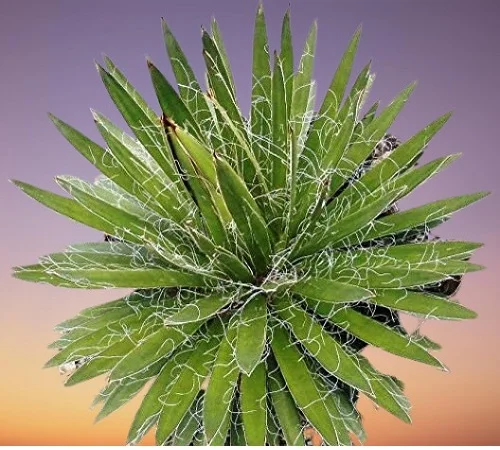
Thread Agave or Thread-leaf Agave is an evergreen, succulent, compact plant which bears a beautiful, stemless rosette of long, blade-like, dark-green to a bronzish-green colored leaves.
Thread-leaf Agave grows to a height of upto 2 feet and up to 3 feet wide. The leaves are about 1 ft long. On account of its compact size and love for sunshine, it is one of the best plants for a sunny balcony.
Agave filifera flourishes in bright light with 6-8 hours of direct sunlight, warmth of 21-320C, humidity of 50-55% and moderately moist, rich, well-drained succulents soil coupled with monthly feeding during the growing season in the first 2 years of growth.
Read more on how to grow and care for Thread Agave
20. Chain Plant (Tradescantia navicularis)
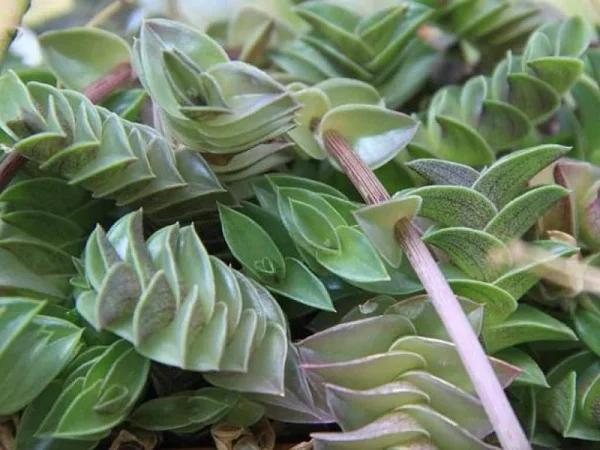
Chain Plant also called Widow's Tears Plant or Day Flower has two type of stems which exhibit different growth habits where some stems are short, grow upright and bear tight overlapping leaves while others spread along the ground and bear more open leaves.
Tradescantia navicularis also called Callisia navicularis, one of the succulent Tradescantia Plants bears fleshy stems which are tightly clasped by thick waxy lance-shaped leaves.
Tradescantia navicularis thrives in bright indirect light (dappled light), warmth of 16-270C, humidity of 50-55% and moderately moist, fertile, well-drained succulents potting soil coupled with fortnightly feeding in the growing season.
Learn more on how to grow and care for Chain Plant
